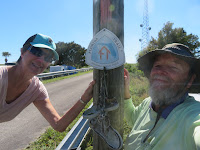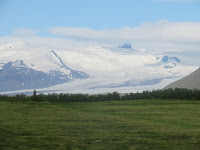 Since it is December,
every place we go is heavily decorated. Many of the RV’s we see are decorated,
some of them heavily. Many of the residences are decorated, even many of the
condominium units’ balconies. Local municipalities have their decorations on
the lampposts and in the parks. But I particularly liked the decorations put
out by this pub.
Since it is December,
every place we go is heavily decorated. Many of the RV’s we see are decorated,
some of them heavily. Many of the residences are decorated, even many of the
condominium units’ balconies. Local municipalities have their decorations on
the lampposts and in the parks. But I particularly liked the decorations put
out by this pub. The city of Flagler
Beach seems to go all out, and I am sure the local pubs and restaurants take
full advantage of it. On Saturday they had their Holiday Parade and the place
was mobbed. I made a bad call trying to get through town just after the parade
ended and was essentially stranded in a half block for about an hour before I
just turned around and went back. Last Friday was the First Friday in December.
The city park gets decked out, vendors and kiddie stuff galore, and local bands
provide the music. It was fun!
The city of Flagler
Beach seems to go all out, and I am sure the local pubs and restaurants take
full advantage of it. On Saturday they had their Holiday Parade and the place
was mobbed. I made a bad call trying to get through town just after the parade
ended and was essentially stranded in a half block for about an hour before I
just turned around and went back. Last Friday was the First Friday in December.
The city park gets decked out, vendors and kiddie stuff galore, and local bands
provide the music. It was fun!
We also managed to find
the ruins of the Bulow Plantation. In 1821 Major Charles Wilhelm Bulow acquired
nearly 5,000 acres on a tidal creek that was later named Bulow Creek. Milling
sugar made the plantation a huge financial success. Sadly, in 1863 during the
Second Seminole War, the plantation was burned to the ground. While only some
crumbling foundations remain of the mansion and the slave quarters, we wandered
through the ruins of the old sugar mill, and could actually get an idea of the
milling process by the remains of the vats and boilers.
Talk again next February.
Talk to you soon.





























































